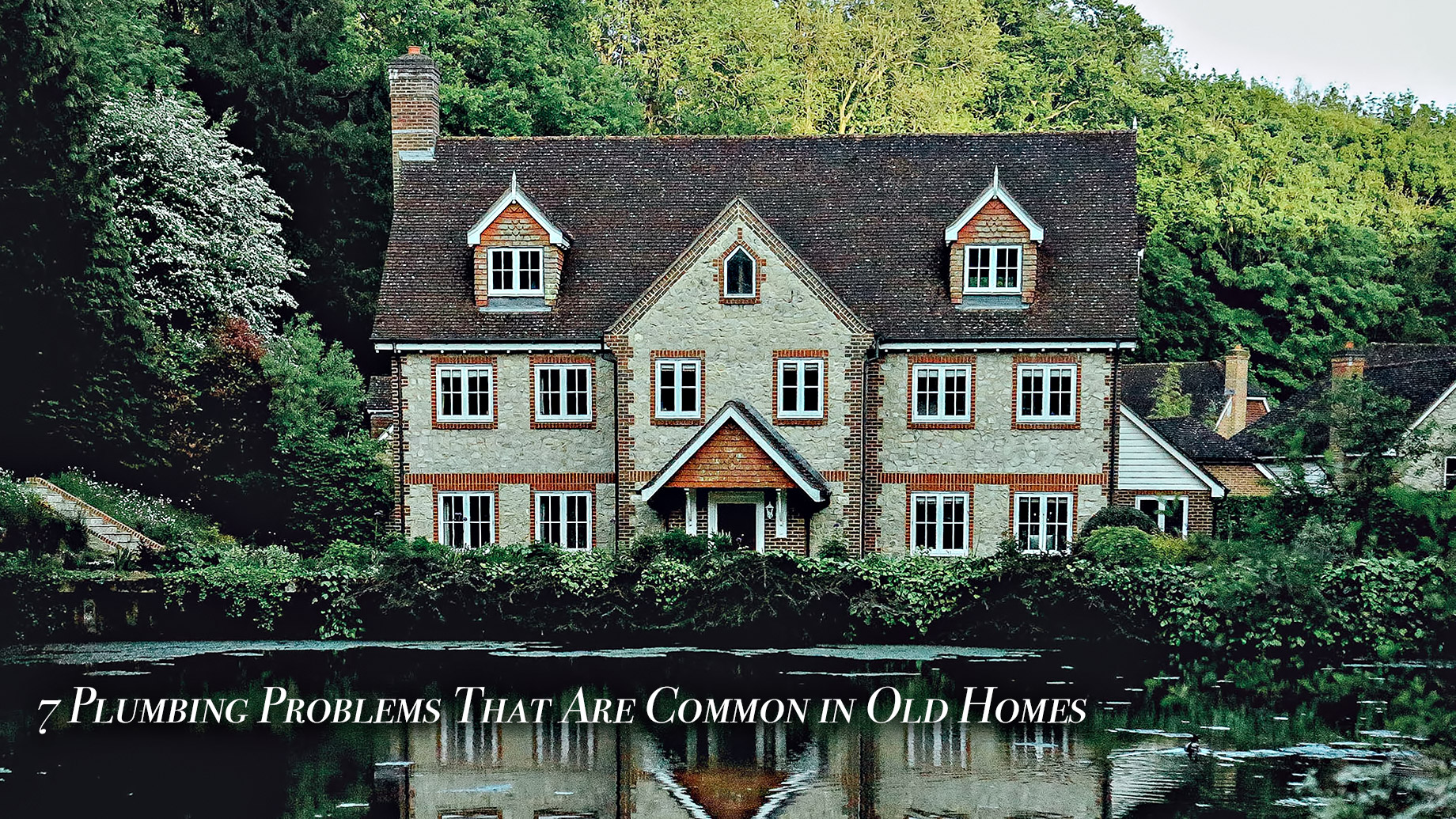
It’s true that the charm of old spaces never dulls a bit. In fact, many times you’ll find these houses are replete with superior furniture and antique interiors which may prove to be worth a collector’s award.
Nevertheless, the vintage charm may come at a hidden price. Whether you’ve been living in an old home or you’re planning to move into one you recently purchased, you’re likely to face challenges when it comes to dealing with the aged fixtures and settings. We strongly advise you to get hold of the plumbing and drainage diagram of the house if you’re planning to purchase an old property. Armed with the layout, you’ll probably be able to tackle plumbing problems and renovations better.
Now that you’re ready to grab the bull by its horns, here are the specific plumbing problems you need to look out for in old homes.
1. Pipe corrosion
Modern homes are built with PVC pipes and drains. But the older houses were fitted with metal pipes – copper pipes and galvanized steel pipes being most common. These metal pipes corrode easily.
There is a high chance that the pipelines in the vintage home are made of metal and have already been damaged and rusted. These pipes will need replacement because the water supply through them will be unsafe. Also such pipes can cause leakage problems. Given the age and condition of these pipes, a main water line replacement may be advisable. Replacing old metal pipes with newer materials like PVC or PEX not only ensures a cleaner and safer water supply but also reduces the likelihood of future leaks and maintenance issues. This proactive step can greatly improve the plumbing system’s efficiency and longevity.
2. Pipe leakages
Not only are the metal pipes prone to rusting and leakage, you also need to be wary of polybutylene pipes. Most of the houses built between the 70’s and the 90’s were fitted with polybutylene pipes since they turned out to be cheap and convenient. But time has revealed that these pipes are not very durable. The material gets easily damaged due to continuous water exposure.
If you’re buying or moving in a house built around the same time, there is a strong possibility that you will be encountering some leaky pipes.
3. Water pressure problems
Water pressure problems can arise in houses with old plumbing and poor maintenance. The most common cause is corroded pipelines which get blocked with deposits.
With low water pressure, everyday tasks can become a big hassle. It can also affect the functioning of water-based home appliances like dishwashers and washing machines.
You can test the water pressure by running the tap or the shower.
4. Sewer line issues
Another common problem when it comes to old homes with neglected plumbing is that of the sewer lines. Sewer lines and septic tanks require regular maintenance, unclogging and timely repair in case of damage.
Neglected sewer lines can eventually cause major leaks or sewer backup flow. You may need to engage in elaborate repairs if the sewer lines are damaged. Also if the septic tank hasn’t been pumped out for too long, that’s another job you need to get done at the earliest.
5. Worn-out fixtures
You may have already anticipated that some replacements would be due for the old home. You can add plumbing fixtures to the list. Most of the faucets, valves, washers and handles wear out with time. There may be minor leaks through these damaged fixtures which may go unnoticed for some time.
Conduct a thorough survey of all the plumbing fixtures in the house, you’re sure to find a few that have already served their time.
6. Root intrusion
If there are huge old trees surrounding the house, you should be aware that their roots can penetrate sewer lines and plumbing pipes. It is not possible to make a definite assessment of the situation just by looking at the surface. You will have to hire professional services for inspection and possible repair works.
7. Drainage clogs
Clogged drains and pipes show up regularly as the most common plumbing problems in any household. These issues are sure to arise in old homes, especially if proper maintenance is ignored. Restoring clogged drains isn’t just a big task and can be handled by any experienced plumber.